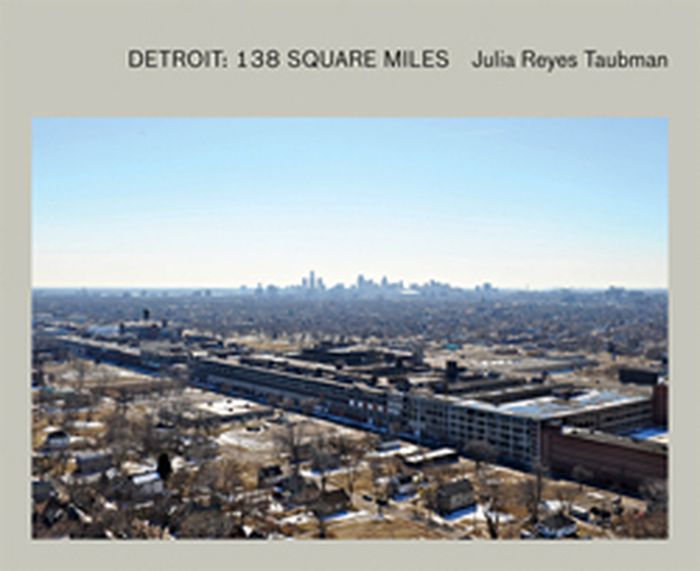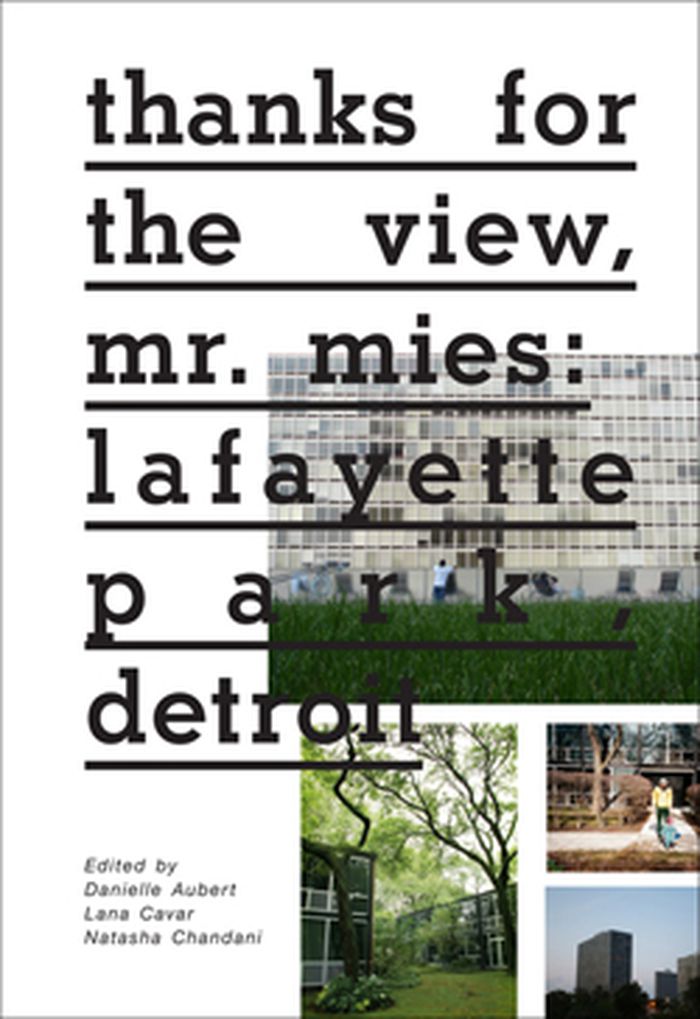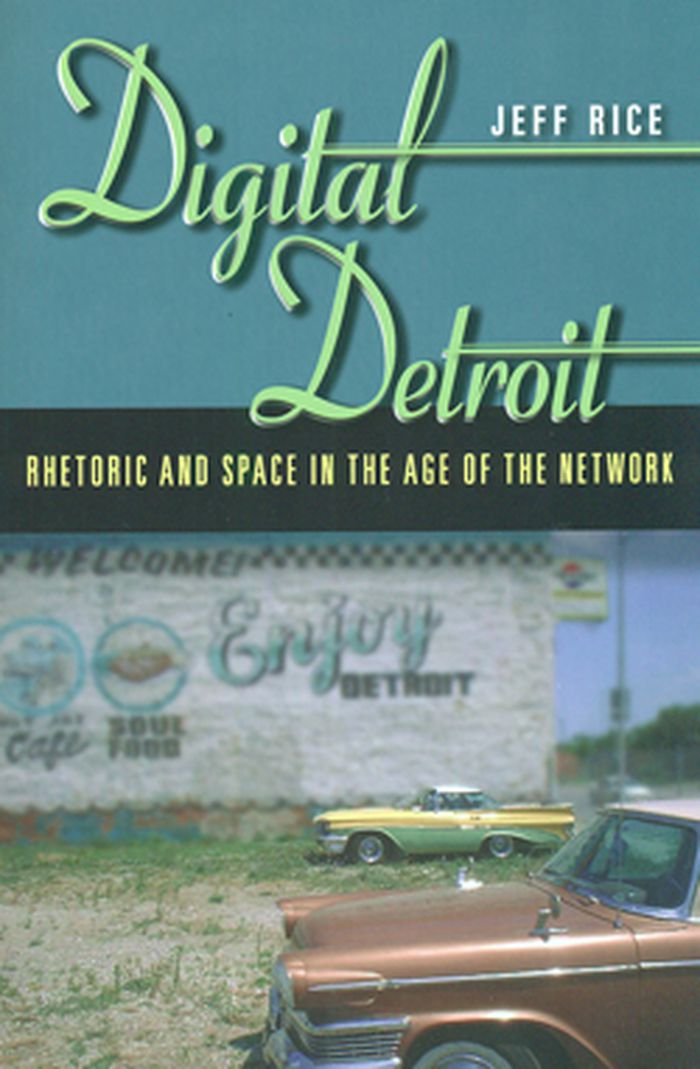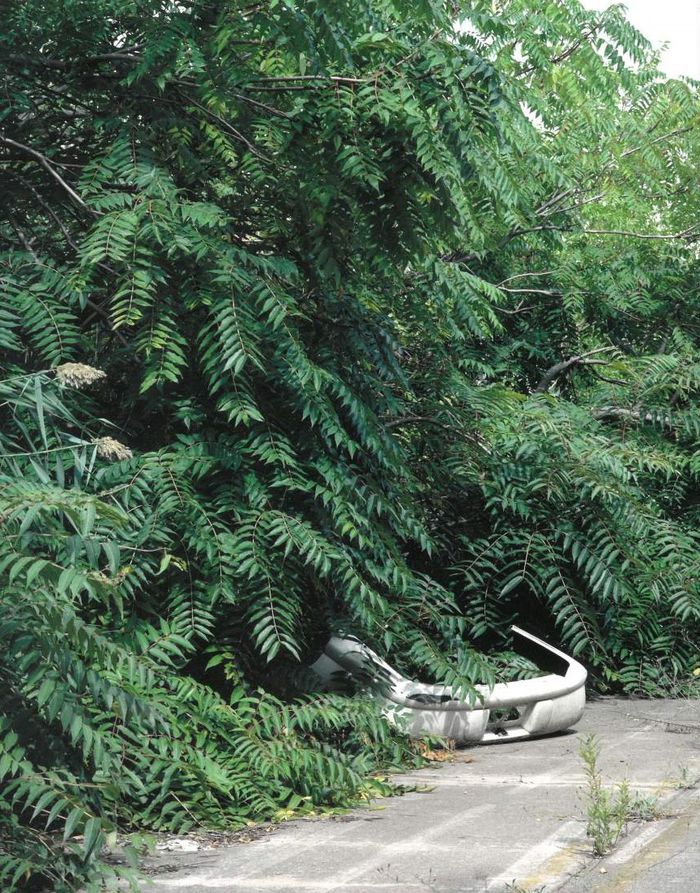$49.95
(disponible sur commande)
Résumé:
Detroit 1968 was first published in 1972 under the title New American People, and was the subject of Enrico Natali's 1969 solo exhibition at the Art Institute of Chicago. In his introduction to the 1972 edition, Hugh Edwards, former Curator of Photography at the Art Institute of Chicago, wrote: "All the photographs in the present collection were taken in 1967-1970 in(...)
Detroit 1968 : photographs by Enrico Natali
Actions:
Prix:
$49.95
(disponible sur commande)
Résumé:
Detroit 1968 was first published in 1972 under the title New American People, and was the subject of Enrico Natali's 1969 solo exhibition at the Art Institute of Chicago. In his introduction to the 1972 edition, Hugh Edwards, former Curator of Photography at the Art Institute of Chicago, wrote: "All the photographs in the present collection were taken in 1967-1970 in Detroit, which in no way restricts their presentation as a brief of how Americans look and live today. These scenes and incidents might have occurred anywhere in the United States in this time when regional characteristics are disappearing ... this is a view of a situation and condition, not a localization." Forty years later, we can now also appreciate the specificity of Natali's subject, as this body of work presents an insightful exploration of Detroit when it was on the cusp of losing half of its inhabitants, along with its status as America's industrial capital.
Monographies photo
$64.00
(disponible sur commande)
Résumé:
Although his best-known project was the World Trade Center in New York City, Japanese American architect Minoru Yamasaki (1912-1986) worked to create moments of surprise, serenity, and delight in distinctive buildings around the world. In his adopted home of Detroit, where he lived and worked for the last half of his life, Yamasaki produced many important designs that(...)
Yamasaki in Detroit: a search for serenity
Actions:
Prix:
$64.00
(disponible sur commande)
Résumé:
Although his best-known project was the World Trade Center in New York City, Japanese American architect Minoru Yamasaki (1912-1986) worked to create moments of surprise, serenity, and delight in distinctive buildings around the world. In his adopted home of Detroit, where he lived and worked for the last half of his life, Yamasaki produced many important designs that range from public buildings to offices and private residences. In Yamasaki in Detroit: A Search for Serenity, author John Gallagher presents both a biography of Yamasaki-or Yama as he was known-and an examination of his working practices, with an emphasis on the architect's search for a style that would express his artistic goals.
Architecture, monographies
$65.00
(disponible sur commande)
Résumé:
Over the past six years, documentary photographer and architectural historian Julia Reyes Taubman has taken more than 30,000 photographs across the sprawled terrain of Detroit, ambitiously mapping out a comprehensive survey of a major American city. Photographing on the ground, in the buildings and by air and water, Reyes Taubman believes that when buildings and landscape(...)
Julie Reyes Taubman: Detroit, 138 squares miles
Actions:
Prix:
$65.00
(disponible sur commande)
Résumé:
Over the past six years, documentary photographer and architectural historian Julia Reyes Taubman has taken more than 30,000 photographs across the sprawled terrain of Detroit, ambitiously mapping out a comprehensive survey of a major American city. Photographing on the ground, in the buildings and by air and water, Reyes Taubman believes that when buildings and landscape are manipulated by nature and time they become more visually compelling than almost any architectural intervention.As Reyes Taubman scrutinizes this 138-square-mile metropolis in transition, she pays particular attention to the scale and the solidity of the buildings that characterized the former “Motor City” at the height of its industrial wealth and power. More than a photographic saturation job of a single city, Detroit: 138 Square Miles provides contextual perspective in an extended caption section in which Reyes Taubman collaborated with University of Michigan professors Robert Fishman and Michael McCulloch to emphasize the social imperatives driving her documentation. An essay by native Detroiter and bestselling author Elmore Leonard addresses the social and cultural significance of the post-industrial condition of this metropolis. The volume's spine is specially treated with black ink to evoke the industrial character of its subject.
Monographies photo
livres
$74.25
(disponible sur commande)
Résumé:
The art in the Detroit People Mover stations is a world-class collection with a uniquely Detroit sensibility. When the People Mover, Detroit's elevated transit system, was being planned, the stations were designed simply to serve as basic points of entry and departure, but in 1984 Irene Walt and the Downtown Detroit People Mover Art Commission, a volunteer committee also(...)
Art in the stations : the Detroit People Mover
Actions:
Prix:
$74.25
(disponible sur commande)
Résumé:
The art in the Detroit People Mover stations is a world-class collection with a uniquely Detroit sensibility. When the People Mover, Detroit's elevated transit system, was being planned, the stations were designed simply to serve as basic points of entry and departure, but in 1984 Irene Walt and the Downtown Detroit People Mover Art Commission, a volunteer committee also known as Art in the Stations, undertook the task of incorporating major works by contemporary American artists into the thirteen People Mover stations. As a result Detroit now has one of the most impressive collections of public art in the country. With lush photographs by Balthazar Korab and accompanying narrative, Art in the Stations examines each of the gorgeous works that grace the People Mover stations. A stunning guide through the city's People Mover art installations, Art in the Stations documents Detroit's rich culture and testifies to the perseverance and hard work that made the display of this art possible.
livres
août 2004, Detroit
$59.95
(disponible sur commande)
Résumé:
Detroit. Motor City. Ce nom est depuis cent ans le synonyme de l’industrie automobile américaine. Mais dans la musique, il signifie Haute Énergie, Usine à hits, P-Funk, techno et rap. Il évoque John Lee Hooker et Iggy Pop, Marvin Gaye et Jeff Mills, Bob Seger et George Clinton, Jack White et Eminem. Il embrasse toute l’histoire de la musique américaine, des big bands(...)
Detroit sampler: 100 ans de musique dans la Motor City
Actions:
Prix:
$59.95
(disponible sur commande)
Résumé:
Detroit. Motor City. Ce nom est depuis cent ans le synonyme de l’industrie automobile américaine. Mais dans la musique, il signifie Haute Énergie, Usine à hits, P-Funk, techno et rap. Il évoque John Lee Hooker et Iggy Pop, Marvin Gaye et Jeff Mills, Bob Seger et George Clinton, Jack White et Eminem. Il embrasse toute l’histoire de la musique américaine, des big bands swing qui soulevaient des ballrooms parmi les plus grandes du pays aux soirées électroniques qui faisaient vibrer les murs des friches industrielles, en passant par les shows télévisés prestigieux de Motown, le chaos des soirées psychédéliques des années de braise des seventies et la brutalité du hardcore enragé des années Reagan. Un siècle de musiques où Detroit a toujours été à l’avant-garde des musiques populaires. Cet ouvrage raconte une épopée de vinyle, de furie et d’électricité.
$35.00
(disponible sur commande)
Résumé:
Lafayette Park, an affordable middle-class residential area in downtown Detroit, is home to the largest collection of buildings designed by Ludwig Mies van der Rohe in the world. Today, it is one of Detroit’s most racially integrated and economically stable neighborhoods, although it is surrounded by evidence of a city in financial distress. Through interviews with and(...)
Thanks for the view Mr. Mies: Lafayette Park, Detroit
Actions:
Prix:
$35.00
(disponible sur commande)
Résumé:
Lafayette Park, an affordable middle-class residential area in downtown Detroit, is home to the largest collection of buildings designed by Ludwig Mies van der Rohe in the world. Today, it is one of Detroit’s most racially integrated and economically stable neighborhoods, although it is surrounded by evidence of a city in financial distress. Through interviews with and essays by residents; reproductions of archival material; and new photographs by Karin Jobst, Vasco Roma, and Corine Vermeulen, and previously unpublished photographs by documentary filmmaker Janine Debanné, Thanks for the View, Mr. Mies examines the way that Lafayette Park residents confront and interact with this unique modernist environment. While there are many publications about abandoned buildings in Detroit and about the city’s prosperous past, this book is about a remarkable part of the city as it exists today, in the twenty-first century.
Architecture, monographies
livres
$32.95
(disponible sur commande)
Résumé:
At a time when many of the past decades' urban renewal projects are facing the wrecking ball, Detroit's Lafayette Park continues to be a model of urban livability. This in-depth look at the project explores why. Amid the oppressive urban blight of post-World War II Detroit, the Lafayette Park project emerged as a vibrant point of optimism and viability. Planned by Ludwig(...)
Case : Hilberseimer/ Mies van der Rohe Lafayette park Detroit
Actions:
Prix:
$32.95
(disponible sur commande)
Résumé:
At a time when many of the past decades' urban renewal projects are facing the wrecking ball, Detroit's Lafayette Park continues to be a model of urban livability. This in-depth look at the project explores why. Amid the oppressive urban blight of post-World War II Detroit, the Lafayette Park project emerged as a vibrant point of optimism and viability. Planned by Ludwig Hilberseimer, with concrete, glass, and steel buildings designed by Mies van der Rohe, and a park and gardens designed by Alfred This latest volume in the CASE series published in collaboration with the Harvard University's Graduate School of Design examines an often-overlooked paragon of modern architecture's highest goals. Today, while public housing and other urban renewal projects are being abandoned and even torn down, this volume discusses not only the significance of Lafayette Park's singular achievement, but also its relevance to the continuing debates about the status of public housing in the contemporary city.
livres
juin 2004, Berlin, London, New York
Bouffe
$50.00
(disponible en magasin)
Résumé:
Since the 1967 riots that ripped apart the city, Detroit has traditionally been viewed either as a place in ruins or a metropolis on the verge of rejuvenation. In Digital Detroit author Jeff Rice goes beyond the notion of Detroit as simply a city of two ideas. Instead he explores the city as a web of multiple meanings which, in the digital age, come together in the city's(...)
Digital Detroit : rhetoric and space in the age of the network
Actions:
Prix:
$50.00
(disponible en magasin)
Résumé:
Since the 1967 riots that ripped apart the city, Detroit has traditionally been viewed either as a place in ruins or a metropolis on the verge of rejuvenation. In Digital Detroit author Jeff Rice goes beyond the notion of Detroit as simply a city of two ideas. Instead he explores the city as a web of multiple meanings which, in the digital age, come together in the city's spaces to form a network that shapes the writing, the activity, and the very thinking of those around it.
Théorie de l’architecture
$53.95
(disponible sur commande)
Résumé:
The artist’s book “Detroit“ presents the contemporary urban landscape of this de- industrialized metropolis as an overlay of social and natural history. The catchwords “ruin porn” and “future city” are currently being used in the media to describe what was once celebrated as the “Motor City”. In her photographs and texts, Franziska Klose describes a landscape absolutely(...)
Franziska Klose: Detroit, field notes from a wild city
Actions:
Prix:
$53.95
(disponible sur commande)
Résumé:
The artist’s book “Detroit“ presents the contemporary urban landscape of this de- industrialized metropolis as an overlay of social and natural history. The catchwords “ruin porn” and “future city” are currently being used in the media to describe what was once celebrated as the “Motor City”. In her photographs and texts, Franziska Klose describes a landscape absolutely consumed by industry, its structure a manifestation of social inequality, despite all the conjurations of an imminent economic boom. The story of the “comeback” is set against land speculation and water shut-offs and contrasts with the emergence of a potential post-growth society based on urban agriculture and individual autonomy.
Monographies photo
$37.95
(disponible en magasin)
Résumé:
In The City after Property, Sara Safransky examines how postindustrial decline generates new forms of urban land politics. In the 2010s, Detroit government officials classified a staggering 150,000 lots—more than a third of the city—as “vacant” or “abandoned.” Analyzing subsequent efforts to shrink the Motor City’s footprint and budget, Safransky presents a new way of(...)
The city after property: Abandonment and repair in postindustrial Detroit
Actions:
Prix:
$37.95
(disponible en magasin)
Résumé:
In The City after Property, Sara Safransky examines how postindustrial decline generates new forms of urban land politics. In the 2010s, Detroit government officials classified a staggering 150,000 lots—more than a third of the city—as “vacant” or “abandoned.” Analyzing subsequent efforts to shrink the Motor City’s footprint and budget, Safransky presents a new way of conceptualizing urban abandonment. She challenges popular myths that cast Detroit as empty along with narratives that reduce its historical decline to capital and white flight. In connecting contemporary debates over neoliberal urbanism to Cold War histories and the lasting political legacies of global movements for decolonization and Black liberation, she foregrounds how the making of—and challenges to—modern property regimes have shaped urban policy and politics. Drawing on critical geographical theory and community-based ethnography, Safransky shows how private property functions as a racialized construct, an ideology, and a moral force that shapes selves and worlds. By thinking the city “after property,” Safransky illuminates alternative ways of imagining and organizing urban life.







